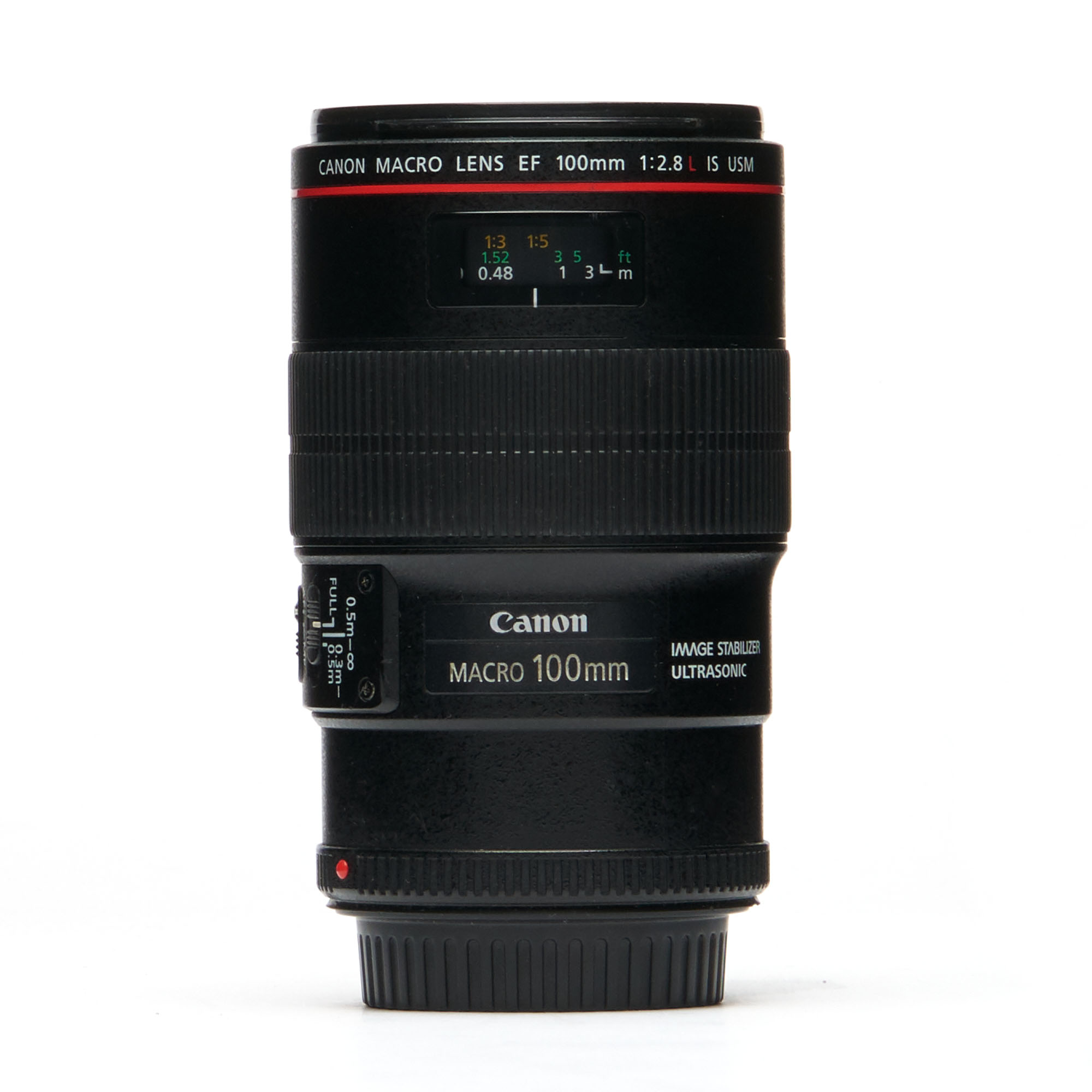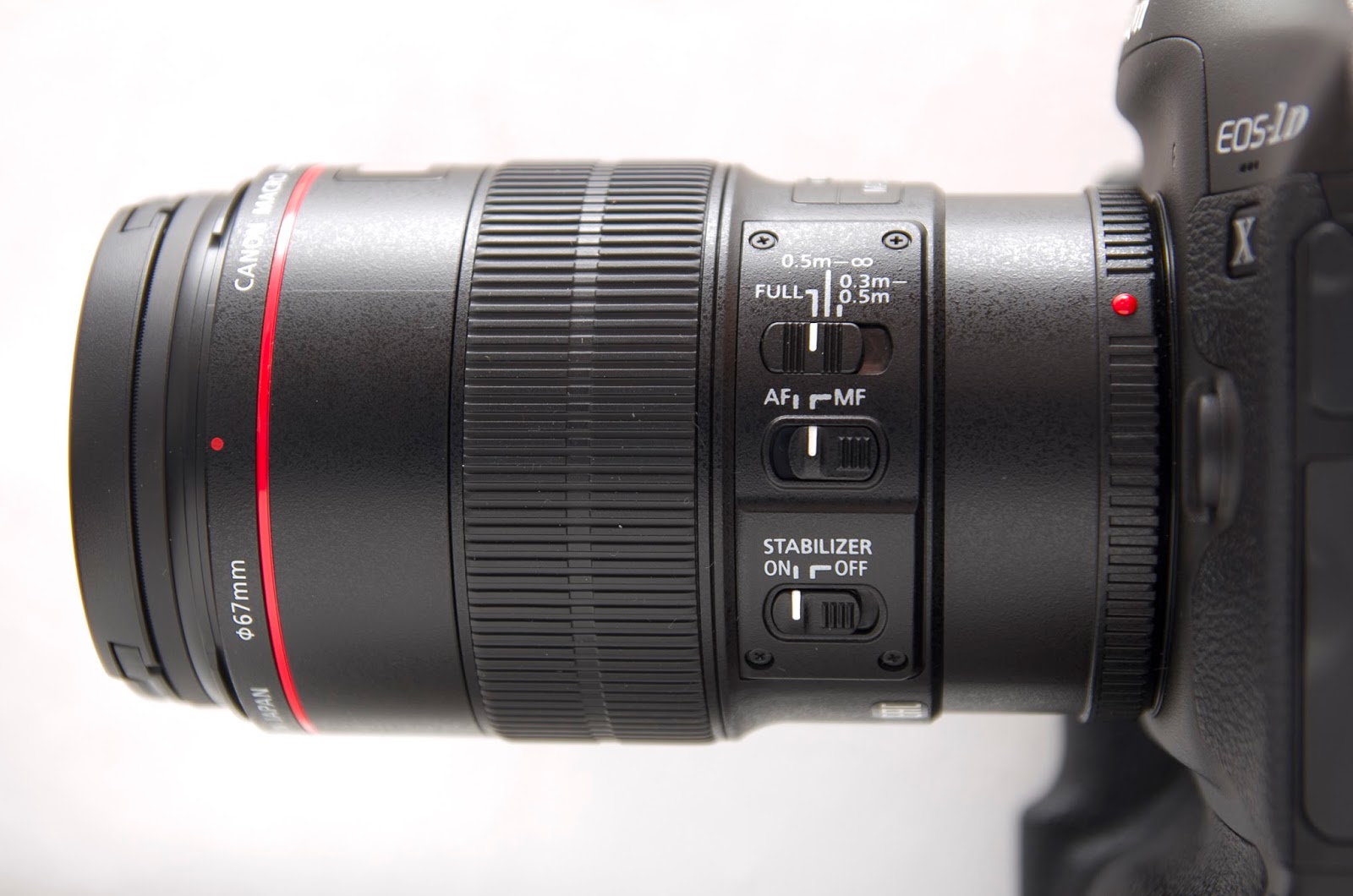

- #Canon macro 100mm focus line manual#
- #Canon macro 100mm focus line upgrade#
- #Canon macro 100mm focus line full#
- #Canon macro 100mm focus line series#
The 100mm macro has a focus limiting switch with three options: 0.3-0.5m, 0.5m-∞, and full, meaning full range. The Canon 100mm f/2.8 L IS USM Macro lens gets a rating of 13 perceptual megapixels, so we are not seeing much of an improvement over the 60mm macro here either. I think the autofocus is so quick and decisive on the 60mm that you would not really notice the difference of having the focus limiting switch. This will theoretically improve your autofocus speed by taking away part of the focusing range, thereby making the lens more decisive when focusing on subjects that are outside of the very close focusing range. One advantage is that the 100mm f/2.8 USM macro has a focus limiting switch that allows you to choose between focusing from 0.31m-∞ or 0.48-∞.
#Canon macro 100mm focus line upgrade#
The 100mm f/2.8 macro gets a rating of 12 perceptual megapixels, so you are not losing much in the way of sharpness by choosing the 60mm macro if you do not plan to upgrade to full frame. If we look at the sharpness score for the 60mm macro, we see that DXO Mark gives it a rating of 11 perceptual megapixels. I mounted them all on a Canon 70D to give an even playing field, since the 60mm macro is a crop sensor lens. I have brought up all three lenses for comparison in DXO Mark and included a screenshot below. I want to bring up the sharpness of this lens compared to the two Canon 100mm options I have previously mentioned. All images were shot on a Canon 7d Mark II. I am going to go over a few images that I have taken to illustrate the image quality of this lens. At an equivalent of 96mm on a crop sensor camera, it is a very nice focal length for portraits and produces pleasing bokeh.

This lens produces excellent image quality throughout the focusing range. This lens is internal focusing, meaning that the front element does not extend and retract as you change your focus distance.

It has a quiet, fast, and accurate USM autofocus motor. The autofocus motor is very accurate and even tracks moving subjects well, especially when focusing on objects that are further than a meter away. It has a 52mm front filter thread size, which is nice if you are going to be buying filters because they will be relatively inexpensive. This is no surprise, as this is the standard in this price range for Canon lenses. It has no weather sealing or rear rubber gasket. It has a metal lens mount, which is an upgrade from many of the kit lenses that you might already have with your crop sensor body.
#Canon macro 100mm focus line manual#
Is also has full time manual focus override when the focus switch is set to AF. The focus ring is smooth, nicely dampened, and feels tightly assembled. This is nice for macro photography, where you will often be using manual focus to get precise focus on your subject. It has a relatively long focus throw, for an autofocus lens, of 135 degrees. When you lightly shake the lens nothing moves or rattles in the interior of the lens and it feels very sturdy.
#Canon macro 100mm focus line series#
It is also tightly assembled like Canon’s L series lenses, and has a very nice build quality overall. It has a plastic exterior, but with thicker and higher quality plastic than many of Canon's kit lenses that are paired with their crop sensor cameras. While this lens has a quite plastic exterior build, it is reminiscent to a lot of Canon’s L series lenses like the 24-70mm f/2.8 and the 50 and 85mm f/1.2 lenses. The dimensions are 2.87x2.75 inches for the 60mm macro, 3.1x4.7 inches for the 100mm macro, and 3.06x4.84 inches for the 100mm L macro. If weight is a large consideration for you, you may prefer to stick with the 60mm macro (11.8 ounces) to the 100mm f/2.8 (1.28 lbs) or the 100mm f/2.8 L (1.38 lbs). The 60mm macro comes in at around two inches shorter than both of the 100mm options. The 60mm macro is a great option If you plan to stay on Canon’s crop frame line up, especially if you prefer to have a more compact and lightweight lens. While these options are initially more expensive, you will save money in the long run by spending a little more if you plan to upgrade to full frame, in which case you might end up buying twice to upgrade to a full frame lens. The Canon 100mm f/2.8 USM macro lens and the 100mm f/2.8 L IS USM macro lens are great options that also give a true 1:1 reproduction ratio. This means, if you ever want to upgrade to a full frame camera, you may want to consider some of the other options in Canon’s lens line up. This lens has the Canon EF-s designation, meaning that it can only be mounted to Canon’s smaller and less expensive crop sensor (APS-C) bodies like the t/t(X)i series, 70/80D series, and the 7D series. I want to start out this review with who I think this lens is for.


 0 kommentar(er)
0 kommentar(er)
